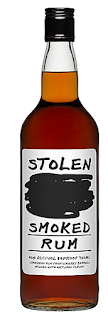 |
| The Scotland version |
In the past few decades, a number of long-shuttered distilleries have been renovated and put back in service. This is not one of those. The "lost" part of the name refers to historic distillations the company is emulating to create its products. As the company describes it, "We don’t have a warehouse full of old forgotten whisky, we don’t have a secret recipe or DNA analysis, and we don’t have plans to reopen any of these lost distilleries. The answer to what we do lies in the history books."
The Lost Distillery partners distillers with an "archive team," led by Michael Moss of the University of Glasgow, to focus on what the company deems "the 10 key components that influenced the original character of these long lost whiskies" from long-closed distilleries.
Its spirits are divided into classic, archivist and vintage categories. Each marries anywhere from five to 10 single malt whiskies from different distilleries throughout Scotland. One good example of the craftsmanship is the whisky known in the U.S. as Benachie and in Scotland as Jericho. The original distillery was named Jericho when it opened in 1824 -- about two years after founder William Smith began making unlicensed whisky, then in 1884 became known as Benachie.
The Benachie, made from 100% malted barley, is a shimmering amber liquid with big, bold opening malt notes on the nose, and a pleasing sweetness on the palate that brings to mind brown sugar, raisins, and apricots, but a certain oakiness actually takes a bit of the edge off the flavor the nose promises. In the finish, however, it rebounds with a long, soft finale.
The Lost Distillery Company Classic Selection Benachie, bottled at 43% abv (86 proof) carries a suggested retail price of $43 for the 750ml bottle.








































